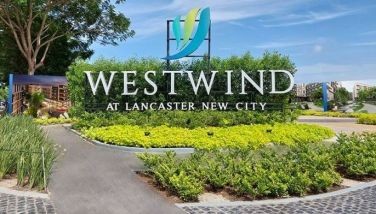Porphyra, a versatile sea vegetable
There are a good number of Filipino seaweed farmers and entrepreneurs who have focused efforts and invested money in farming Eucheuma and Kappaphycus. These red sea vegetables, produced mainly in
However, the strong competition for Eucheuma and Kappaphycus shown by neighboring seaweed-producing countries such as
Porphyra (Laver-English, Nori-Japanese, Kim-Korean, Chi choy- Chinese, and Gamet-Ilokano) is a red, papery sea vegetable. It is protein-rich with a high market demand, both domestically and internationally. This sea vegetable, though predominantly temperate in distribution, abounds in the northeastern coast of
There are three species of Porphyra in the
These three species are dried, mixed and marketed in roundish or squarish shapes. The Ilokanos relish Porphyra, among more than a dozen edible seaweed species, as part of their meals. The ethnic and most popular food preparation of Porphyra is in the form of a salad using as ingredients crushed ripe tomatoes, sliced green mangoes, and fish paste or bagoong. Eating sea vegetables among Ilokanos dates back to the olden days and this was handed down through generations, making the Ilokanos the top seaweed-consuming Filipino ethnic group. The high seaweed-eating percentage among Ilokanos, in part, explains the relatively low incidence of goiter in
Porphyra marcosii, a new species named after the late President Ferdinand Edralin Marcos, is recommended for sea farming because it is morphologically the longest among the three Porphyra species (Cordero, 1976). Also, the culture technology is known and the expertise is available. In 1970, I successfully grew laboratory and field cultures of Porphyra tenera (Asakusa-nori, Japanese) while pursuing my masteral studies in
Viability of a Porphyra industry
In a feasibility study on the farming of Porphyra marcosii, I showed that a Porphyra seaweed industry promises to be a viable venture (Cordero 1982) by farming the seaweed using the modified culture technique that I developed (Cordero 1970, 1975).
The market forecast of the feasibility study identified actual and potential users/consumers. This includes both industrial and commercial sectors as well as households, which utilize Porphyra as food or ingredient in manufactured products or as garnish in food and soup preparations. Porphyra, known for its nutritive value, contains high percentages of protein, iodine, and vitamins A, B, and C that make it a high-value additive to the Filipino meal. Madlener (1977) reported that Porphyra is among the few seaweeds that “… shares the distinction of possessing, pound for pound, vitamin C values comparable to that of lemons. Species of Porphyra have also been found to contain 36, 000 to 50,000 IU per gram of vitamin A, far more than chicken eggs (850 IU) or chicken liver (10,000 IU).” Further, studies show that Porphyra has a higher protein value than rice or soybeans. A comparative report on protein content among algae showed the following data: Nostoc (Blue-green alga) — 20 percent; Enteromorpha (Green alga) — 20 percent; Analipus (Brown alga) — 22 percent; and Porphyra — 20 percent or more.
Likewise, Porphyra has potential for export to large sea vegetable processor and consumer markets like
The primary domestic market are the people of the Ilocos region long known for their acceptance of sea vegetables, with Porphyra being the most relished among seaweeds, as part of their meals. Also, included are the restaurants and hotels all over the country specializing in Japanese food wherein Porphyra is used in various preparations.
* * *
References
CORDERO, J. M. A Feasibility Study on “Seafarming of the Seaweed Porphyra,” Submitted in partial fulfillment of the requirements for the Degree of Master in Business Administration, Graduate School, Philippine Christian University, Manila. 96 p.
CORDERO, JR. P. A. 1974. Phycological Observations – I: Genus Porphyra of the
CORDERO, JR. P.A. 1975. Growth and Sporulation of Porphyra tenera in the laboratory. KALIKASAN-Phil. Jour. Biol. 4(3): 248-256, 2 text-figs.
CORDERO, JR. P.A. 1976. Phycologica Observations – II: Porphyra marcosii, A New Species from the
CORDERO, JR. P.A. 1977. Studies on Philippine Marine Red Algae Special Publication, Seto Marine Biological Laboratory, Series IV,
CORDERO, JR. P.A. 1979. Phycological Observations – IX: Additional Notes on the Occurrence and Seasonality of Genus Porphyra in the
CORDERO, JR. P.A. 1982. A Preliminary Study on the Ethno-Botany of Philippine Edible Seaweeds, Especially from Ilocos Norte and
MADLENER, J.C. 1977. The Sea-Vegetable Book, Clarkson N. Potter, Inc./Publisher,
OKASAKI, A. 1971. Seaweed and their Uses in
TANIKAWA, R. 1971. Marine Products in
* * *
Dr. Paciente A. Cordero Jr. is a marine biologist whose main research interest is seaweed culture and utilization. He is a former executive director III of the National Research Council of the
- Latest


























